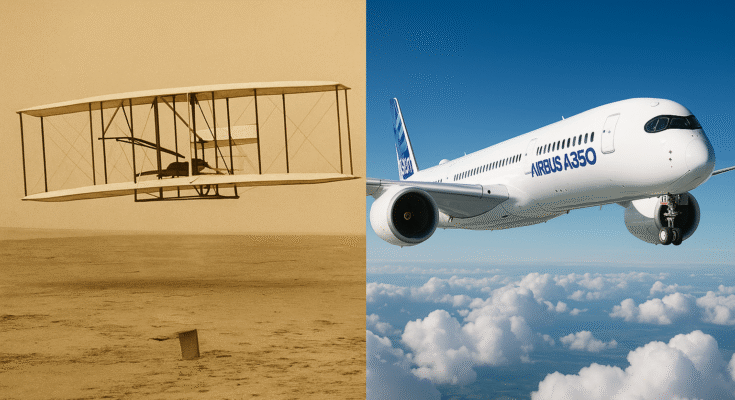Aviation: From Ancient Dreams to Modern Skies
For millennia, humans gazed at birds and dreamed of soaring alongside them. Today, aviation is a cornerstone of modern life—a marvel of science and engineering that connects continents, fuels economies, and pushes the boundaries of exploration. Let’s take flight through the history, mechanics, and profound impact of humanity’s conquest of the skies.
A Brief History of Flight
The journey to the clouds began with leaps of faith—and failure. Early pioneers strapped on makeshift wings or jumped from towers, chasing the myth of Icarus. Then came 1903: Two bicycle mechanics from Ohio, Orville and Wilbur Wright, defied gravity for 12 glorious seconds in a rickety biplane. That fragile flight in Kitty Hawk ignited a revolution. By the World Wars, aviation evolved from canvas-and-wood curiosities to metal giants, paving the way for today’s sleek jets and supersonic wonders.
Types of Aviation: Wings with Purpose
- Commercial Aviation: The backbone of global travel, ferrying millions daily in passenger jets and cargo planes.
- Military Aviation: Fighter jets, drones, and reconnaissance aircraft safeguarding nations and shaping geopolitics.
- Recreational Flight: Gliders, paragliders, and small planes offering hobbyists a taste of freedom.
- Spaceflight: Rockets and shuttles piercing the atmosphere, turning sci-fi dreams into reality.
Anatomy of an Aircraft: Engineering the Impossible
- Wings: Curved to harness airflow, creating lift—the magic that defies gravity.
- Engines: From roaring turbofans to whisper-quiet electric motors, they’re the beating heart of propulsion.
- Cockpit: The pilot’s command center, brimming with dials, screens, and joysticks.
- Tail: A stabilizer steering the aircraft through turbulence and turns.
How Do Planes Fly? The Science of Soaring
Flight boils down to four forces: lift, thrust, drag, and weight. As a plane accelerates, air rushes over its wings. The curved upper surface speeds up airflow, lowering pressure above the wing and creating lift. Engines provide thrust to overcome drag, while pilots adjust flaps and rudders to dance with the wind. It’s physics in motion—a ballet of balance and power.
Why Aviation Transformed Humanity
- Global Connectivity: Tokyo to New York in 12 hours? Aviation shrank the world, making cross-continent friendships and business possible.
- Economic Engine: From fresh Kenyan roses to Amazon packages, air cargo fuels $6 trillion in annual trade.
- Lifesaving Missions: Air ambulances, firefighting planes, and disaster relief choppers turn the sky into a highway of hope.
- Scientific Frontiers: Satellites monitor climate change; rovers explore Mars. Aviation is humanity’s passport to the cosmos.
The Future: Smarter, Cleaner, Faster
Tomorrow’s skies promise electric planes, hydrogen-powered jets, and AI-piloted aircraft. Innovations like vertical takeoff drones and hyperloop hybrids could redefine travel. Yet, the dream remains the same: to fly farther, safer, and greener.


